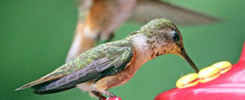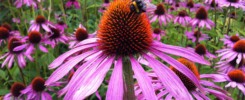The hassles, expense, and time commitment is too much. And the results weren’t that great anyway. Sound like your grass lawn experience? For lots of people, the dream of a beautiful lawn can turn into an ugly reality due to weeds, bugs, drought, and extreme heat. But If you are open to putting in some planning and prep work, the latest alternatives offer options that don’t need all the water, chemicals, and regular mowing of traditional grass. Lawn alternatives can also provide additional benefits like supporting bees, butterflies and other beneficial wildlife. Some grass lawn replacement options suitable for the Metro Vancouver climate are outlined below:
Micro Clover
Micro clover is fast-becoming a popular lawn alternative for some very good reasons; it’s unappetizing to chafer beetles, can handle daily traffic and requires less water than a traditional lawn. Micro clover is also a nitrogen-fixing plant, which means you don’t have to apply fertilizers. A variety of seed mixtures are available that combine micro clover seeds with other plants such as tall fescue and regular grass lawn seed, but there are 100% micro clover formulations, as well.
Here are a few important factors to consider before planting a micro clover lawn. A micro clover lawn is not as hard-wearing as regular versions, so mixing micro clover with grass seed is a better choice for high traffic areas. Rich in green pigments, micro clover will stain clothes more easily than grass, and depending on conditions, you may have to reseed every few years. However, the benefits, such as reduced mowing, and the low cost of clover seed, make the downsides a trade-off many people are happy to make.
To see designs and learn more about micro clover’s characteristics: http://www.growgreenguide.ca/lawns/all-over-clover-lawn
Tapestry Lawn
A tapestry lawn combines a variety of low, ground hugging plants to create a beautiful multi-coloured space. Some common plant choices include thyme, chamomile, and yarrow. Flowering species typically included with tapestry lawns are an excellent way to support pollinators. They offer more nectar and pollen than are usually found with grass. Tapestry lawns also require less frequent mowing, meaning you’ll be reducing your GHG emissions and your chore list at the same time.
Karin England is a professional landscape and park planner with Metro Vancouver. She chose thyme as a lawn replacement for her home.
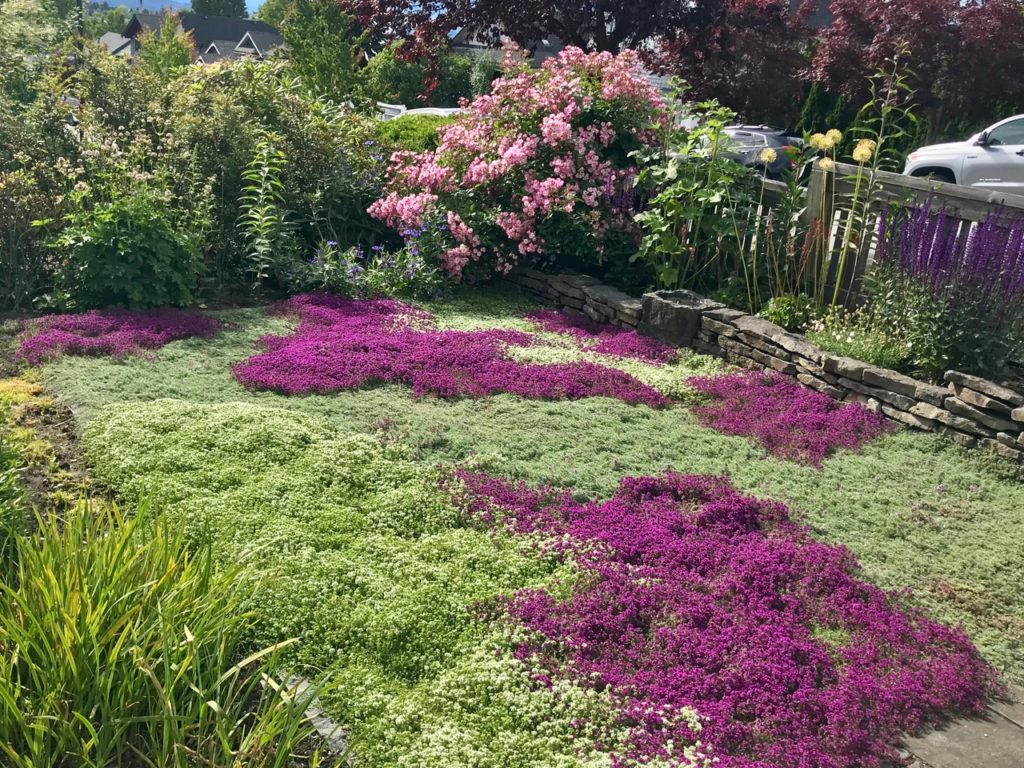
“In the spring of 2015 we had no lawn left, just the kind of
the moonscape that’s left behind after chafer beetle, so I started doing
research about lawn alternatives. Thyme is a plant that also wants very sandy
soil and good drainage so we already had the soil in place and it didn’t take
us very long to do. That summer was quite dry, so we didn’t water very much,
maybe two or three times over the course of the summer. It’s filled in very
nicely and doing really well. I don’t have to mow and the weeding is minimal.
While tapestry lawns are lovely to look at, it is important to note they aren’t as durable as some other lawn alternatives. High-traffic areas, such as paths and or kids’ play spaces aren’t really appropriate for tapestry lawns. However, as an attractive groundcover with low maintenance requirements, it’s a solution that’s hard to beat.
Find out which plants are good candidates for a tapestry lawn: http://www.growgreenguide.ca/lawns/mostly-moist-lawn
Moss Lawn
Our maritime climate in Metro Vancouver has ideal conditions for mosses. To their chagrin, many gardeners will already know that moss is a hardy, adaptable plant, having dealt with it while maintaining a regular lawn. But as they say, if you can’t beat ‘em, join ‘em. Moss makes a great lawn alternative because along with weeding and watering during dry periods, regular sweeping or blowing are the only requirements for the long term health of a moss lawn.
There are some things to keep in mind when considering a moss lawn. First of all, you can’t just take moss from public spaces or Crown land. Be sure to get permission from the landowner before harvesting moss for propagation. If you already have moss in your lawn, it can be the source material. See the two methods outlined in the link below. Also, moss and grass don’t grow particularly well together. If you are going to go with moss as your lawn alternative, the area will have to be cleared of all existing ground vegetation first.
Learn more about using moss as a lawn replacement:
Sedum Mat
Sedum is a succulent plant often used for green roof applications. But the plant’s low maintenance requirements, drought resistance, and attractive appearance make it a great lawn alternative as well.

At the British Columbia Institute of Technology, Landscape, Grounds, and Fleet Operations supervisor Adam Dickinson has been incorporating sedum mat into the campus landscaping.
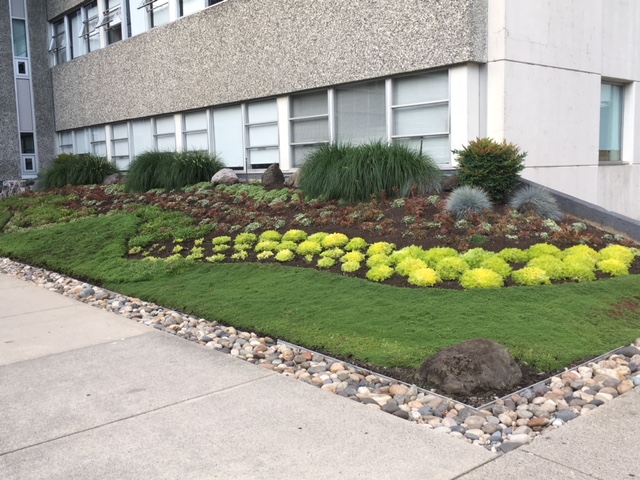
“The test site we did in partnership with Nat’s Nursery has been a big success. What we found is that we only have to water it every 3 weeks during the summer drought. The sedum mats are very low maintenance. Basically you just have to get in there once a year to trim it and you can even leave the clippings on the ground as they will propagate on their own after a couple of weeks.”
Sedum’s low maintenance characteristics are ideal for the locations chosen at BCIT, but Dickinson points out it may not be durable enough for all applications.
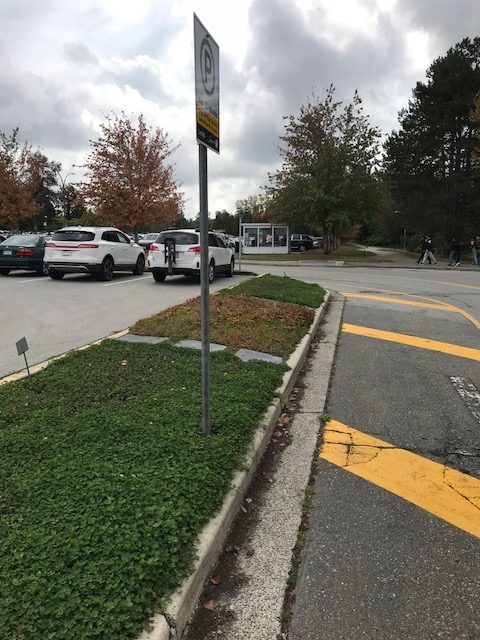
“I would recommend sedum as a lawn alternative, although perhaps not for high-traffic areas such as kids’ play areas. Some of the other lawn alternatives such as wooly thyme are a more hard-wearing alternative, but the best solution is provide access for foot traffic with traditional grass, or paving stones, or similar.”
Alternatives Make it Easier
Lawn alternatives can be an attractive, easy-care approach to your home’s landscape. Site preparation and plant selection are the keys to success. Visit the Lush Lawns section of the Grown Green Guide to find out important details that can make a big difference in creating a beautiful space. The online quiz there can help you narrow down plant options that best suit your conditions.
Grow Green Guide – Lush Lawns


